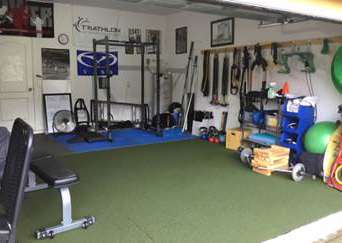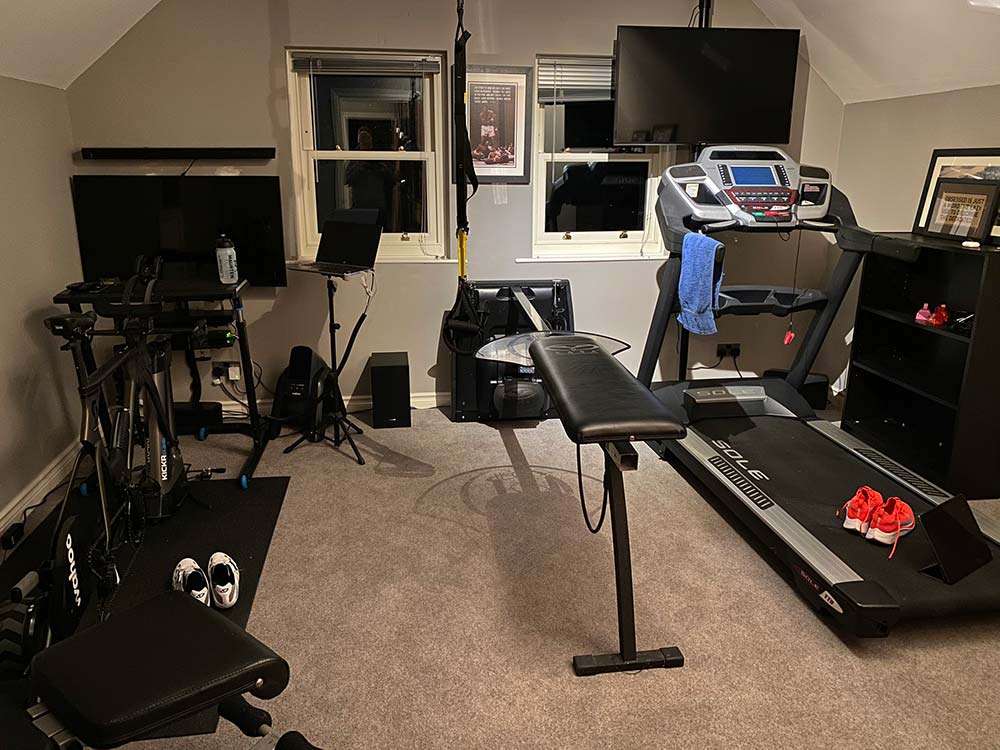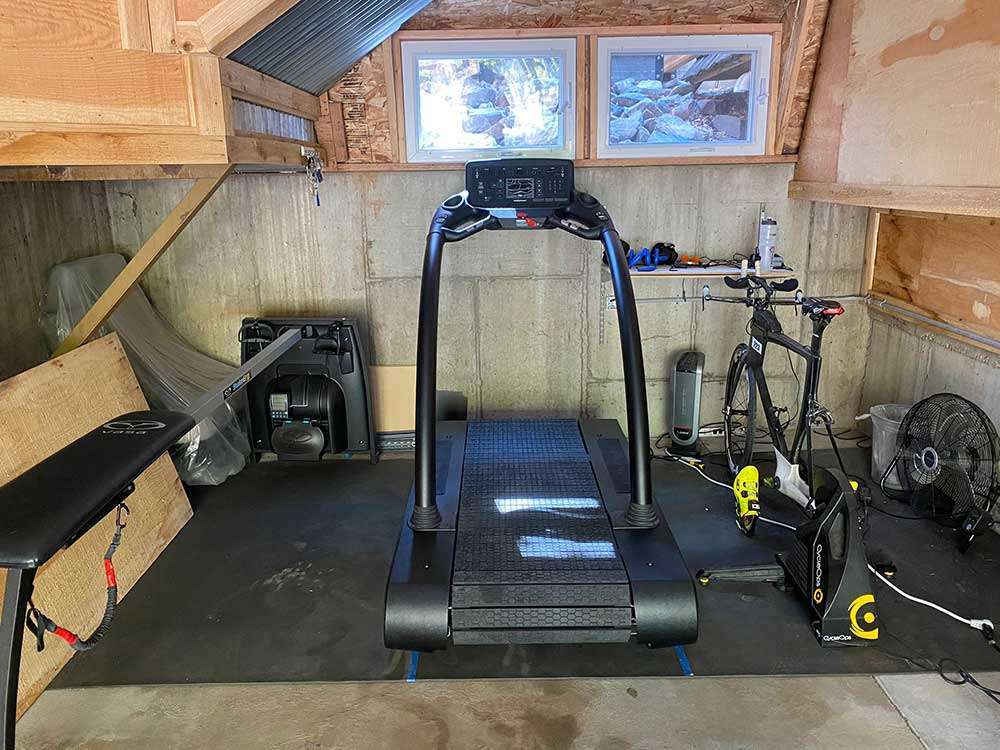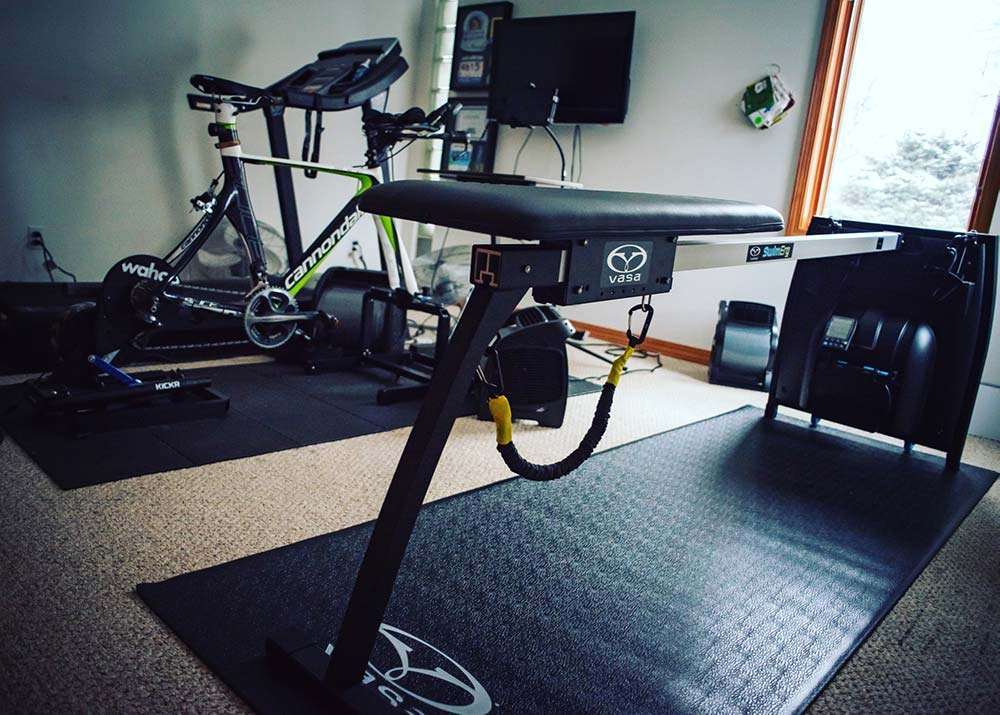Whether you call it a home gym, pain cave, gain cave, wattage cottage, or just your favorite escape, now is the perfect time to create your ideal at-home training center so you can stay fit and improve during the coming months...
I never thought I’d have a so-called “pain cave,” because I’ve never understood cycling or running indoors. What I enjoy most about cycling and running is that they take me places, and those places should be outside. Swimming doesn’t typically take you places unless you’re lucky enough to do the majority of your swimming in open water.
Then my daughter was born just as my gym and pool closed. All of a sudden, time was at a premium, and swimming outside the house was no longer an option. In a perfect world, I could’ve built a 25-meter pool in the backyard, but I was about $150,000 short of that perfect world.
“Every swimmer’s dream is to have a 25-meter pool in their backyard, but few of us are able to do that. I look at the Vasa SwimErg as the next best thing,” says veteran triathlon coach Tim Crowley, who has been using Vasa for the last 15 years.
At Home Triathlon Training For Strength
Crowley has spent the last decade building out what he calls his “Personal Performance Center,”. It’s something that would make any endurance athlete or exercise junkie green with envy. His “PPC” even moved with him from Boston to Clermont, Florida where he has resided with his family since 2012. While most of us don’t have the luxury of turning our entire garage into a state-of-the-art at-home triathlon training center, Crowley has plenty of advice on where to get started no matter the size of your alcove and budget.
 “If you’re starting from zero and don’t have a lot of dedicated space, a suspension system—like TRX—and some medium to heavy kettlebells are all you need to get started training from home. Neither are really expensive, and they take up almost no space,” he says.
“If you’re starting from zero and don’t have a lot of dedicated space, a suspension system—like TRX—and some medium to heavy kettlebells are all you need to get started training from home. Neither are really expensive, and they take up almost no space,” he says.
While the variety of exercises you can do with a TRX are plentiful, the amount of resistance you can apply is limited. Once you’ve exhausted all you can do with the basics, Crowley recommends adding a set of progressive dumbbells. This will allow you to use anywhere from 5-50 pounds.
 The last thing Crowley recommends for at-home strength training is a power rack and barbell set up if you have space and budget. “Now they even have ones that fold out from the wall,” he says. “And the costs have really come down. The best thing Crossfit gave to the world was good, low-cost equipment for home use.”
The last thing Crowley recommends for at-home strength training is a power rack and barbell set up if you have space and budget. “Now they even have ones that fold out from the wall,” he says. “And the costs have really come down. The best thing Crossfit gave to the world was good, low-cost equipment for home use.”
Adding a Vasa To Your Training Center
 While at-home strength training can go a long way to maintaining swim fitness, there aren’t really any swim-specific movements you can do with weights or a suspension trainer. For building swim-specific strength and muscular endurance at home, nothing compares to a Vasa SwimErg or Trainer Pro. Determining which one is right for you depends on your goals and circumstances.
While at-home strength training can go a long way to maintaining swim fitness, there aren’t really any swim-specific movements you can do with weights or a suspension trainer. For building swim-specific strength and muscular endurance at home, nothing compares to a Vasa SwimErg or Trainer Pro. Determining which one is right for you depends on your goals and circumstances.
“I have a lot of athletes ask me which one they should get,” Crowley says. “If you want something that helps with the swim while being a great home strength-training device, then the Trainer Pro is the way to go. If an athlete has all the strength stuff they need, or they do those workouts at a gym, and they’re looking for something that is truly swim-specific with data, then the SwimErg is best.”
Especially for triathletes, the SwimErg makes it possible to transition from a “swim” to the bike with incredible ease. For SwimRun athletes, it allows multiple, short intervals of swimming and running to mimic the experience on race day. Trying to transition from swimming to running multiple times is logistically a huge hassle if you’re at an indoor pool.
At Home Triathlon Training From Star Athletes
 For professional Ironman triathletes like Andrew Starykowicz (@tri_starky) and Lionel Sanders (@lsanderstri), or unprofessional Ironman triathletes like myself, the SwimErg is the logical choice because of how closely you can imitate a race-day swim. And while the unit itself is about 8′ long, you don’t need a ton of space for it & it’s easy to move around when you need to. If you’re like me or Starykowicz, the one corner of your basement that isn’t covered in kids’ toys works fine. Or, if you’re like Sanders and your pain cave is full, you make space for it in the living room.
For professional Ironman triathletes like Andrew Starykowicz (@tri_starky) and Lionel Sanders (@lsanderstri), or unprofessional Ironman triathletes like myself, the SwimErg is the logical choice because of how closely you can imitate a race-day swim. And while the unit itself is about 8′ long, you don’t need a ton of space for it & it’s easy to move around when you need to. If you’re like me or Starykowicz, the one corner of your basement that isn’t covered in kids’ toys works fine. Or, if you’re like Sanders and your pain cave is full, you make space for it in the living room.
Regardless of where you set it up, there’s nothing quite like Vasa for swimming from home. Except, of course, for the backyard 25-meter pool of your and my dreams.
 “A lot of people think Vasa is best for people who aren’t strong or experienced swimmers, but even for someone with a competitive swimming background, the efficiency is what makes it so valuable,” Crowley says. “It gives you that extra time to focus on the bike and run. Driving to and from the pool, or waiting for a lane to open up can be time consuming. Even if you live 10-minutes from a pool, that’s 20 minutes there and back. A good, solid 20-minutes on the SwimErg is enough, and it’s very race-specific.”
“A lot of people think Vasa is best for people who aren’t strong or experienced swimmers, but even for someone with a competitive swimming background, the efficiency is what makes it so valuable,” Crowley says. “It gives you that extra time to focus on the bike and run. Driving to and from the pool, or waiting for a lane to open up can be time consuming. Even if you live 10-minutes from a pool, that’s 20 minutes there and back. A good, solid 20-minutes on the SwimErg is enough, and it’s very race-specific.”
About The Author: Brad Culp is an endurance sports journalist and lifelong swimmer. He’s previously worked as editor-in-chief of Triathlete and LAVA magazines, as well as media manager of the International Triathlon Union. He’s a graduate of Miami University with degrees in journalism and psychology and resides in Geneva, Illinois.